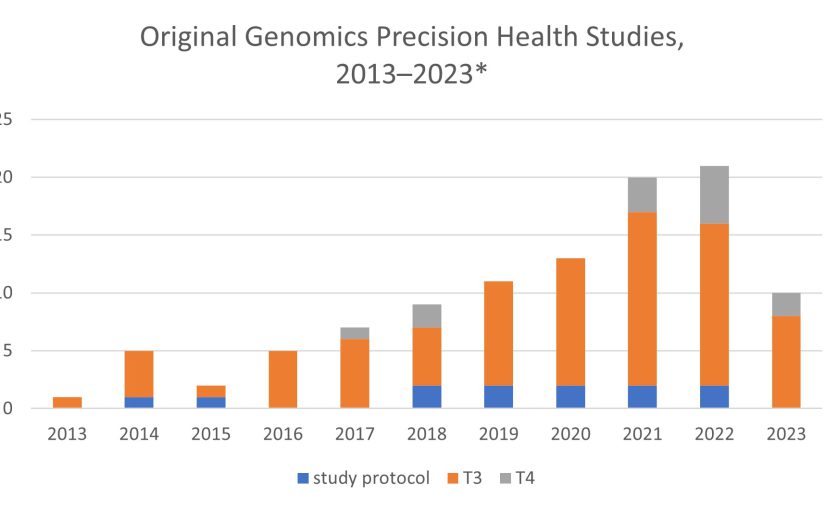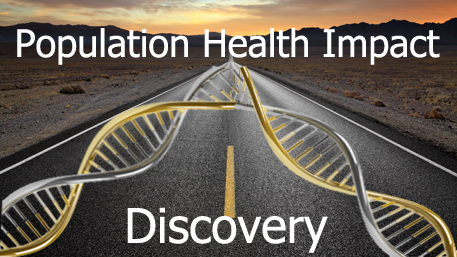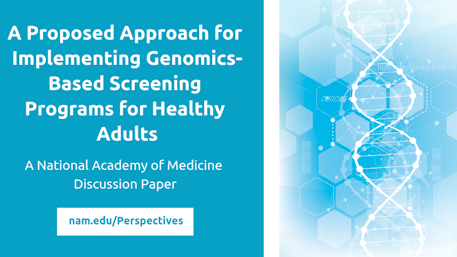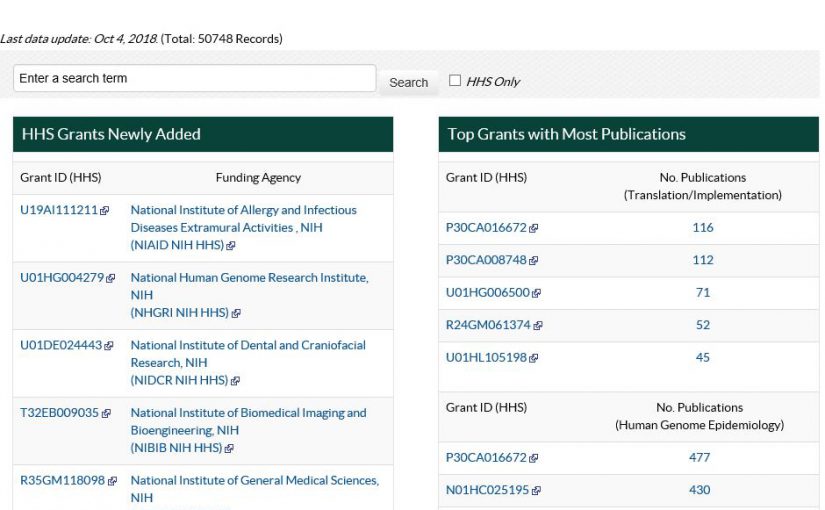Category: population health
Tracking the Contributions of Implementation Science to the Population Health Impact of Genomics and Precision Health: A New Knowledge Base

Successful implementation of evidence-based genomic and precision health interventions requires an understanding of what works and what doesn’t work within the context of various clinical and public health settings. Research and evaluation that incorporate implementation science tools and methods into the translation of these interventions facilitate this. Here we present a new CDC knowledge base, Read More >
Posted on by 1 CommentLarge-Scale Population Studies as a Path to Personalized Medicine: Easier Said than Done!

For more than two decades, advances in genomics have promised a new era of personalized or precision medicine (i.e., the right intervention to the right person at the right time). Scientific evaluation of new gene discoveries has been aided by the launch of large-scale epidemiologic and clinical collaborative global studies. In a recent commentary, McCarthy Read More >
Posted on byPrecision Medicine Update: Important Progress on the Long Road from Discovery to Population Health Impact

Impressive Pace and Potential The All of Us Research Program is an ambitious United States initiative launched in 2015 to collect health-related information on one million or more volunteers from diverse communities. A recent paper in the New England Journal of Medicine described progress and lays out the vision for the initiative moving forward. As Read More >
Posted on byImplementing Genomics-Based Screening Programs for Healthy Adults: A Proposed Evidence-based Approach from the Genomics and Population Health Action Collaborative

The following report was developed by the Genomics and Population Health Action Collaborative (GPHAC) as a potential roadmap for groups planning to carry out projects involving genomics-based screening programs in the healthy adult populations. The report is available in its entirety on the National Academy of Science, Engineering and Medicine website. The advent of next Read More >
Posted on byIntroducing GRANTOMICS: Our enhanced search engine and analysis tool for grant information associated with publications on genomics and population health impact.

The CDC Office of Public Health Genomics has launched GRANTOMICS, an extension of the Public Health Genomics Knowledge Base (PHGKB). GRANTOMICS is an upgraded version of the Grant Database, introduced in March, 2018, and reviewed in a previous blog. The upgraded GRANTOMICS database allows you to: Perform searches with any free text word or term, Read More >
Posted on by 1 CommentTracking the Translation of Genomic Discoveries to Population Health Benefits: Connecting the Dots from Investment to Population Health Information

In March 2018, the CDC Office of Public Health Genomics launched the Grant Database (GDB), an extension of the Public Health Genomics Knowledge Base (PHGKB). GDB “connects the dots” between funding investment and publications on translation, implementation, and evaluation of population health impact of genomics and precision medicine. We launched PHGKB in 2016, as an Read More >
Posted on byGenomics and Population Health Action: The Collaboration Continues!

In March 2018, I attended the third annual meeting of leaders of the Genomics and Population Health Action Collaborative (GPHAC). GPHAC was formed late in 2015 under the auspices of the National Academy of Medicine’s Roundtable on Genomics and Precision Health to foster collaboration of more than 50 diverse stakeholders, including state public health programs, Read More >
Posted on byGenome Sequencing for Healthy Individuals? Think Big and Act Small!

In a 2013 blog post, we asked the question: “When should we all have our genomes sequenced?” At that time, we concluded that the time is not right and that “if we want to use whole genome sequencing in the course of regular preventive care and health promotion, research should be conducted to evaluate its Read More >
Posted on byGenomics and Population Health Action: Join the Collaboration

In February 2017, I attended a one-day meeting of leaders of the Genomics and Population Health Action Collaborative (GPHAC). This group of more than 40 organizations and individuals is dedicated to the integration of genomics into clinical and public health programs to save lives and prevent disease. (Details on GPHAC and its membership can be Read More >
Posted on byCan we use genetic screening of healthy populations to save lives and prevent disease? Join the conversation.

On January 30, 2017, CDC held a special workshop to discuss the role of public health in the implementation of genetic screening programs beyond the newborn period. The workshop brought together panelists from the worlds of medical genetics and public health practice, including cancer, birth defects, and laboratory science. Workshop presenters and a CDC panel discussed Read More >
Posted on by 6 Comments

